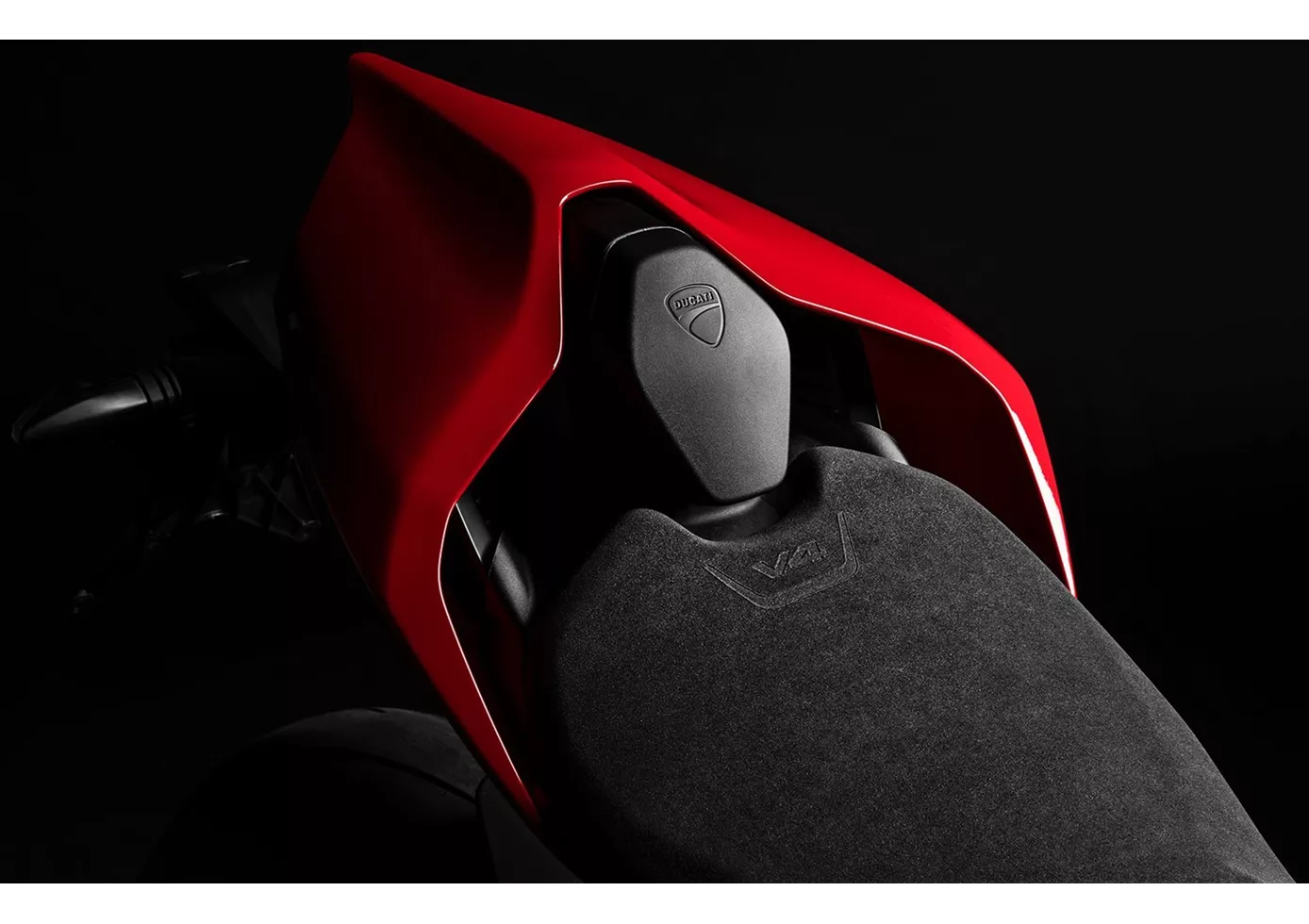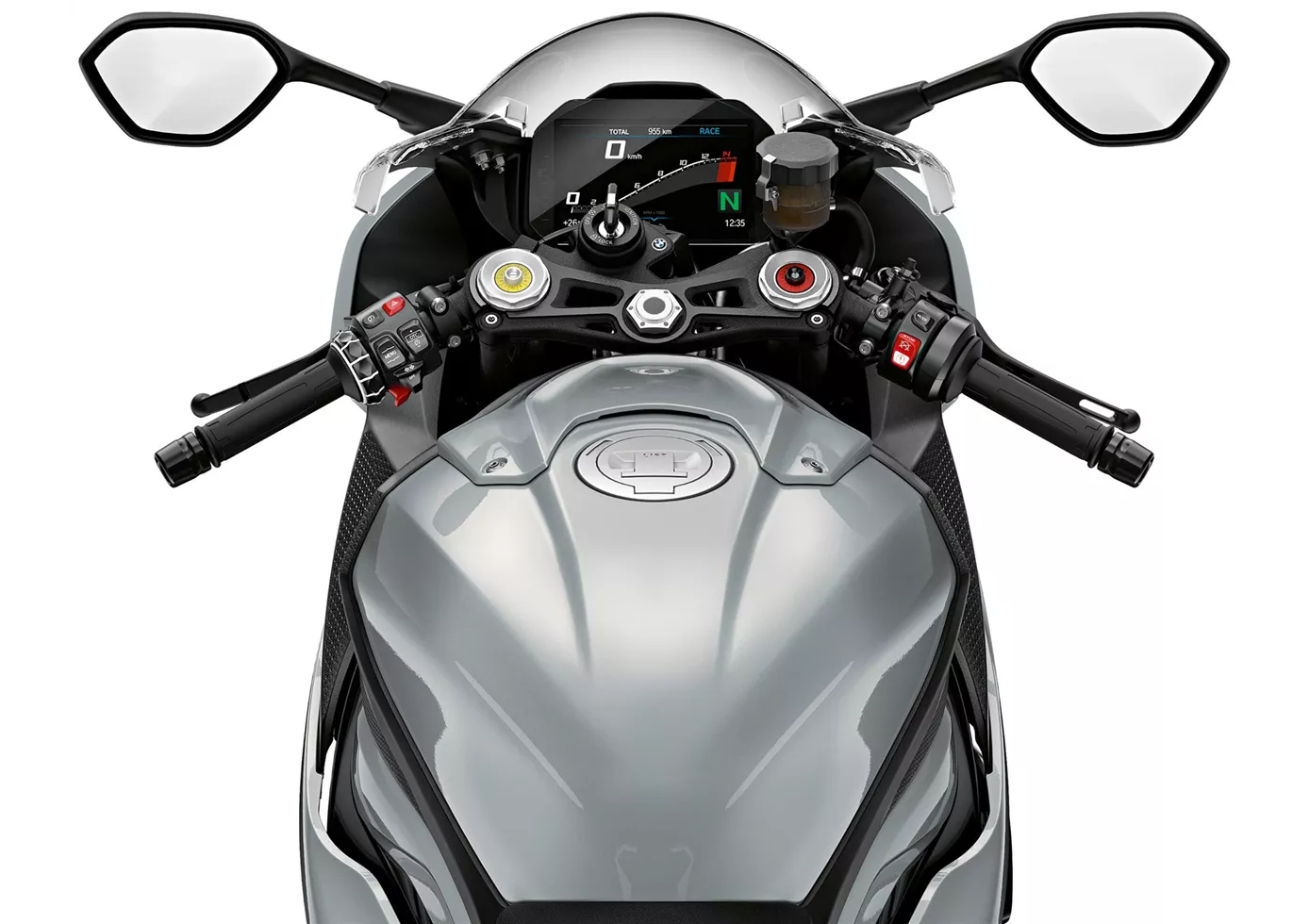Ducati Panigale V4 S 2021 vs. BMW S 1000 RR 2020

Ducati Panigale V4 S 2021

BMW S 1000 RR 2020
Overview - Ducati Panigale V4 S 2021 vs BMW S 1000 RR 2020
The Ducati Panigale V4 S model year 2021 and the BMW S 1000 RR model year 2020 are both high-performance supersport motorcycles. While they share some similarities in terms of specifications, they also have distinct differences that set them apart.
Starting with the engine and drive train, the Ducati Panigale V4 S is equipped with a V4 engine, while the BMW S 1000 RR features an in-line four-cylinder engine. The Ducati has a larger bore of 81mm compared to the BMW's 80mm, which may contribute to its higher power output of 214 HP compared to the BMW's 207 HP. However, the BMW has a higher torque rating of 113 Nm compared to the Ducati's 124 Nm. Both bikes have a high compression ratio, with the Ducati at 14 and the BMW at 13.3.
In terms of suspension, both motorcycles feature upside-down telescopic forks at the front and a monoshock suspension at the rear. The Ducati has a slightly smaller front fork diameter of 43mm compared to the BMW's 45mm. Both bikes offer adjustable compression, preload, and rebound settings for the front and rear suspension components. The Ducati's rear swing arm is made of aluminum, while the BMW's swing arm material is not specified.

Ducati Panigale V4 S 2021
Both motorcycles have aluminum frames, with the Ducati utilizing a monocoque frame design and the BMW featuring a twin-tube, load-bearing engine frame type. The Ducati has a slightly steeper rake angle of 65.5 degrees compared to the BMW's 66.9 degrees, which may affect the handling characteristics of the bikes. The BMW has a shorter trail measurement of 93.9mm compared to the Ducati's 100mm.
In terms of braking, both motorcycles feature double disc brakes at the front, but the Ducati has larger 330mm diameter discs compared to the BMW's 320mm discs. The Ducati also utilizes radial, monoblock brake technology, which may provide improved braking performance. Both bikes come equipped with ABS as part of their advanced rider assistance systems.
In terms of dimensions and weights, both motorcycles have similar front and rear tire widths and diameters. The Ducati has a slightly longer wheelbase of 1469mm compared to the BMW's 1441mm. The seat height of the Ducati is slightly higher at 830mm compared to the BMW's 824mm. The Ducati also has a slightly lower curb weight of 195kg compared to the BMW's 197kg. Both motorcycles have similar fuel tank capacities, with the BMW having a slightly larger capacity of 16.5 liters compared to the Ducati's 16 liters.
Both motorcycles come equipped with LED headlights as standard equipment.

BMW S 1000 RR 2020
In terms of strengths, the Ducati Panigale V4 S 2021 offers more power for 2022, improved controllability, and tuning of chassis components. It also boasts better ergonomics and changed gearbox tuning. On the other hand, the BMW S 1000 RR 2020 offers a very linear power delivery, wide rev range, and pleasant control. It features ShiftCam technology, which provides ample pressure in the lower rev range. The BMW also has excellent Dynamic Damping Control (DDC), a comprehensive electronics package, and is considered a harmonious overall package for both road and track use.
In terms of weaknesses, the Ducati Panigale V4 S 2021 is noted to have somewhat spongy brakes and lacks a water temperature display in degrees. The BMW S 1000 RR 2020 is described as being somewhat "characterless" compared to other competitors and lags behind on the spec sheet in direct comparison.
Overall, both the Ducati Panigale V4 S 2021 and the BMW S 1000 RR 2020 are highly capable supersport motorcycles with their own strengths and weaknesses. The choice between the two would ultimately depend on the rider's preferences and priorities, whether it be power, handling, electronics, or overall package.
Technical Specifications Ducati Panigale V4 S 2021 compared to BMW S 1000 RR 2020
Pros and Cons in comparison
Pros and Cons in comparison
Ducati Panigale V4 S 2021

There are hardly any real weaknesses left in the current Super Bikes anyway. Who gets along better with which motorbike now depends more on personal preferences than on pure data. By further improving the rideability, the Panigale can certainly score points with more and more riders. The latest update of the Panigale V4S, however, brings some advantages in terms of racetrack use and, not least due to the diverse setting options, probably enables many riders to improve their lap times compared to the predecessor. But how much depends largely on the rider!
BMW S 1000 RR 2020

A real "all-rounder" superbike. The BMW knows how to play to its strengths both on the race track and on the country road. Thanks to variable camshaft control, the powerful engine is already convincing at the bottom end and accelerates harmoniously across the entire rev range, with plenty of power in every range. For the hobby pilot, the chassis certainly functions excellently in every situation, provides transparent feedback and offers many adjustment options. The seating position is sporty yet relatively comfortable. The electronics work very harmoniously without patronising the rider - TOP!
Price Comparison Avarage Market Price Ducati Panigale V4 S vs BMW S 1000 RR
There are a few key differences between a Ducati Panigale V4 S 2021 and a BMW S 1000 RR 2020. In terms of price, the actual average price of a Ducati Panigale V4 S 2021 is about 35% higher. Compared to BMW S 1000 RR 2020 there are less Ducati Panigale V4 S 2021 bikes available on the 1000PS.de Marketplace, specifically 4 compared to 16. It takes less time to sell a BMW S 1000 RR with 68 days compared to 133 days for the Ducati Panigale V4 S. Since model year 2018 1000PS.de editors have written 21 reviews for the Ducati Panigale V4 S and 135 reviews for the BMW S 1000 RR since model year 2010. The first review for the Ducati Panigale V4 S was published on 05/11/2017 and now has more than 131,500 views. This compares to more than 4,000 views for the first review on BMW S 1000 RR published on 16/04/2008.






















